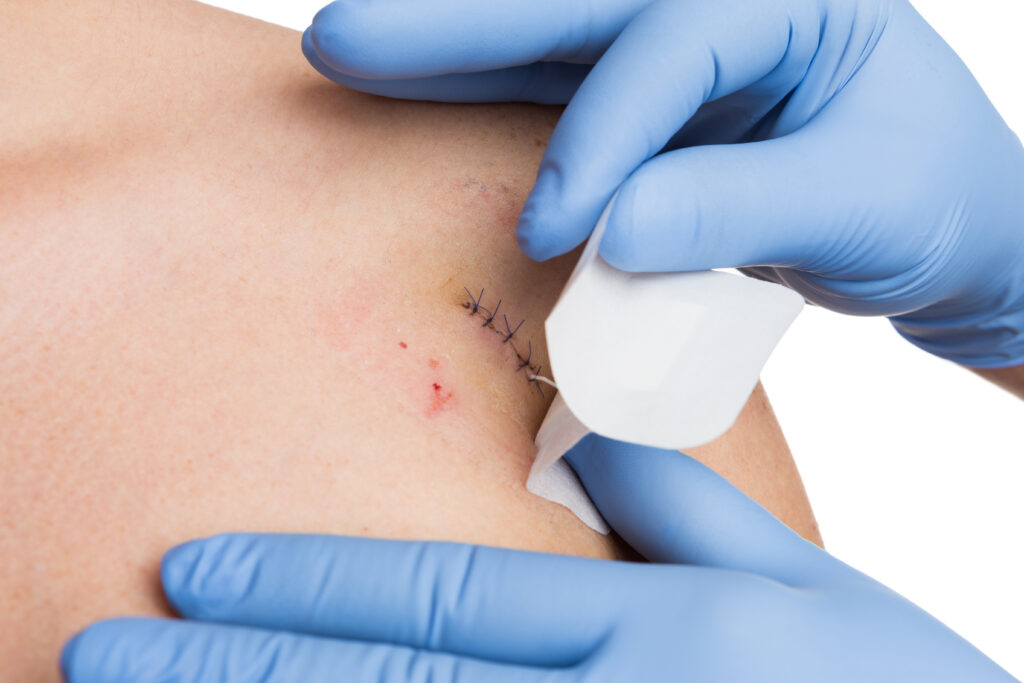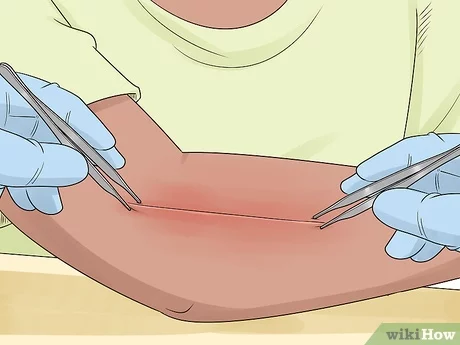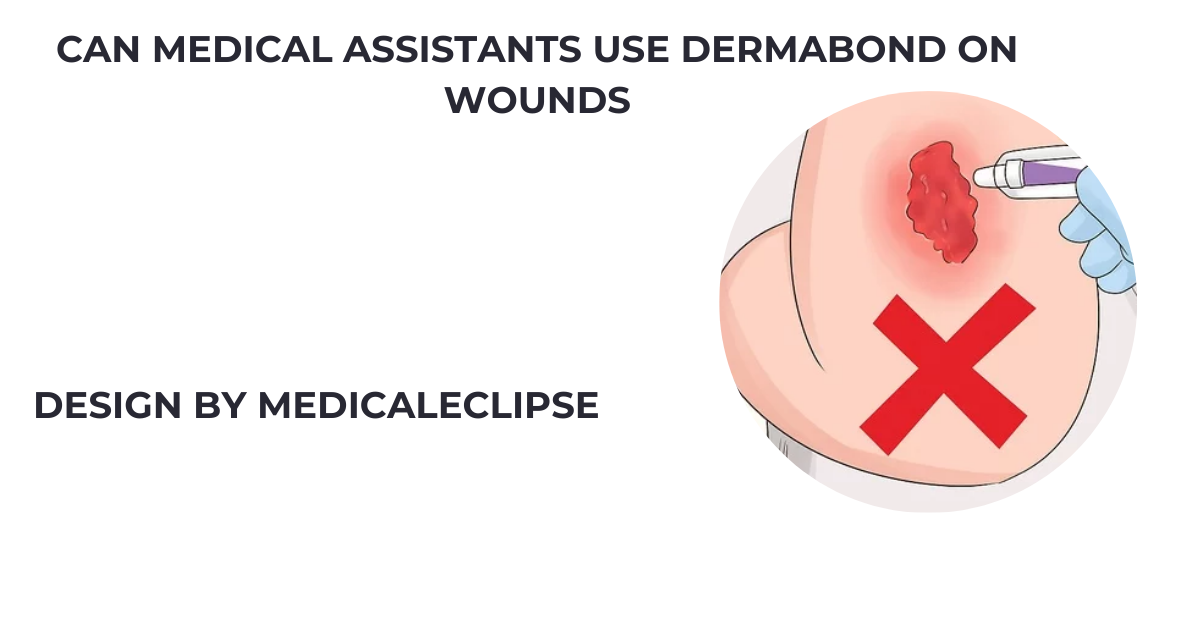Medical assistants typically receive 10 to 20 days of PTO per year, depending on factors like experience, employer, and whether they work full-time or part-time. PTO can include vacation days, sick leave, and personal days.
In this article, we’ll discuss how many days of Paid Time Off (PTO) a medical assistant can expect and how to make the most of your time off. Understanding your PTO benefits is key to maintaining a healthy work-life balance.
What is Dermabond?

Dermabond is a type of skin adhesive used to close wounds or incisions without the need for stitches. It’s a quick and effective way to help wounds heal, especially in areas where traditional sutures might not be ideal. Dermabond is typically used for superficial lacerations or minor cuts that don’t require deeper tissue closure.
How Does Dermabond Work?
Dermabond contains cyanoacrylate, a fast-drying adhesive that bonds to the skin to form a protective layer over the wound. This adhesive helps to close the wound edges and protect it from dirt, bacteria, and other contaminants, promoting faster healing.
The Dermabond adhesive works by creating a barrier over the wound, which:
- issue Adhesive: Dermabond is a liquid tissue adhesive that bonds the edges of a wound or incision together.
- Seals the Wound: It forms a protective layer over the wound, keeping out bacteria and reducing the risk of infection.
- Quick Drying: Dermabond dries rapidly once applied, typically within 30 to 60 seconds, creating a flexible, waterproof barrier.
- Heals Without Stitches: It can be used instead of traditional stitches, especially for smaller, less complex wounds.
- Self-Falling Off: Over time, Dermabond naturally loosens and falls off, generally within 5 to 10 days as the skin heals underneath.
- Flexibility and Comfort: Unlike stitches, Dermabond moves with the skin, making it more comfortable in areas with a lot of movement (like the hands or face).
Can Medical Assistants Apply Dermabond?
Yes, medical assistants can apply Dermabond in certain settings under the supervision of a licensed healthcare provider, such as a physician or nurse practitioner. However, it’s important that they receive proper training and follow the facility’s protocols regarding its use. Dermabond is typically used for small, non-complex wounds, and the decision to use it will depend on the nature of the wound and the patient’s overall health.
Also Read: Aqreva Medical Billing Kaiser – Your Partner in Kaiser Billing!
Key Points to Consider:
Supervision:
Dermabond should be applied under the guidance and direction of a healthcare provider, typically a physician or nurse. While medical assistants may help with the process, they should never independently decide to use Dermabond on a wound without a physician’s order or supervision.
Training:
Medical assistants need to have the proper training and knowledge of wound care techniques to apply Dermabond effectively and safely. In many cases, training is provided during on-the-job learning or through certification programs.
Appropriateness of Use:
Dermabond is best suited for superficial wounds that are not too deep, and it’s crucial to assess whether the wound is appropriate for Dermabond application. Wounds that are large, deep, or in high-mobility areas (like joints) may require sutures or staples instead.
Benefits of Using Dermabond:

Dermabond offers several benefits, especially for minor skin lacerations. Here’s why it can be an excellent choice for certain wound care situations:
- Faster Healing: Dermabond promotes faster wound healing by protecting the wound from infection and providing a stable closure.
- Less Scarring: It typically leaves a smaller, less noticeable scar compared to traditional sutures or staples.
- Reduced Risk of Infection: The adhesive acts as a barrier, reducing exposure to bacteria and lowering the risk of infection.
- No Need for Stitches or Staples: Dermabond eliminates the need for stitches or staples, making the procedure less invasive.
- Faster Procedure: It’s quicker to apply than sutures, making it a time-efficient option for minor wound closures.
- Convenient for Sensitive Areas: Dermabond is often used for areas where sutures may be difficult, such as the face or joints.
- Waterproof: Once applied, it helps protect the wound from water, which can aid in faster recovery and prevent contamination.
When to Avoid Using Dermabond?
While Dermabond is a great option for many minor wounds, it is not suitable for all types of injuries. Here are some situations where Dermabond should not be used:
- Deep or Large Wounds: If the wound is deep, large, or involves significant tissue damage, Dermabond may not provide enough support for proper healing.
- Animal Bites: Dermabond is not recommended for animal bite wounds due to the risk of infection and contamination.
- Wounds with Heavy Bleeding: If the wound is actively bleeding, Dermabond may not be effective in controlling the bleeding or ensuring proper closure.
Also Read: Is Medical Power Of Attorney Same As A Patient Representative – Key Differences Explained!
- Infected Wounds: If the wound shows signs of infection (redness, swelling, pus), Dermabond should not be used as it could trap bacteria inside.
- Mucosal Areas: Dermabond is not suitable for use inside the mouth, nose, or other mucosal membranes, where moisture and friction are present.
- Allergy to Cyanoacrylate: If a person has a known allergy to cyanoacrylate (the main ingredient in Dermabond), it should not be used.
- Joint Movement Areas: Dermabond may not be suitable for areas with high movement, like joints, where the adhesive could be compromised.
FAQ’s
1. Can medical assistants apply Dermabond without supervision?
No, medical assistants should apply Dermabond under the supervision of a healthcare provider such as a physician or nurse.
2.Is Dermabond safe to use on all wounds?
Dermabond is best suited for small, shallow cuts and lacerations. It should not be used on deep or infected wounds.
3. How long does Dermabond stay on the wound?
Dermabond stays on the wound until it naturally falls off as the skin heals, typically in about 5-10 days.
4. Can Dermabond cause an allergic reaction?
While rare, some individuals may experience an allergic reaction to Dermabond. It’s important to assess any signs of irritation or sensitivity.
5. Does Dermabond leave scars?
Dermabond usually leaves minimal scarring compared to stitches, as it doesn’t require removal and provides a smoother closure.
Conclusion
Dermabond is a valuable tool in wound care, and medical assistants may play a role in its application under appropriate supervision. It’s important to have proper training and to understand when and how to use Dermabond effectively. When used correctly, Dermabond can speed up the healing process and provide a safe, convenient alternative to sutures for minor cuts and lacerations. Always ensure that the healthcare provider is involved in the decision and that the wound is suitable for Dermabond use.

Leave a Reply